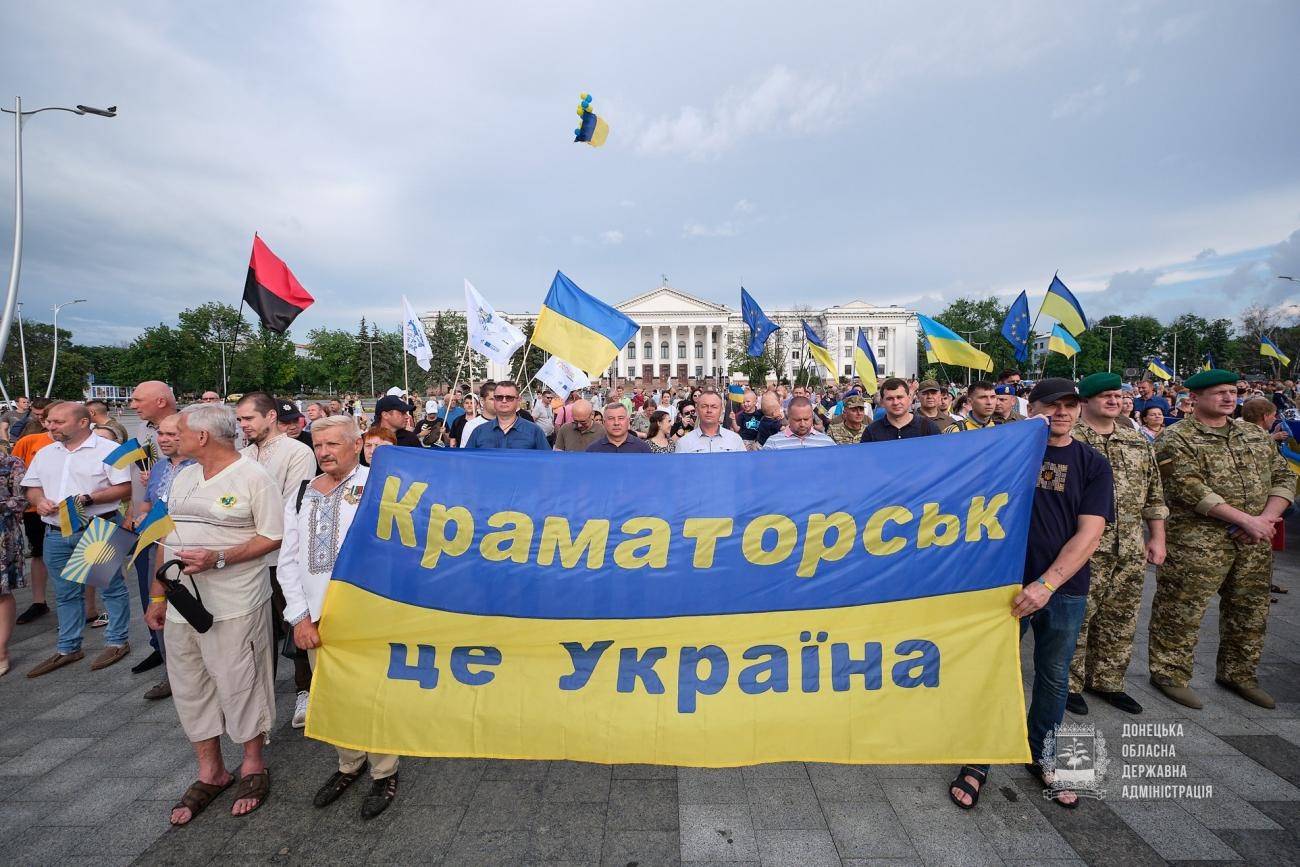
Over eleven years after Sloviansk and Kramatorsk were liberated, the Donetsk oblast cities are again facing the threat of Russian occupation. Not, this time, because Russia has succeeded in taking them, but because US President Donald Trump is determined to get his ‘peace deal’, presumably in order to begin doing business openly with Russia. What this plan entails, it would appear, is that Ukraine ‘hands over all of Donbas’, with this including Sloviansk, Kramatorsk and other territory not under Russian occupation. Russia would not withdraw from other territory it is now occupying, but would supposedly stop trying to advance further, leaving considerable parts of Kherson and Zaporizhzhia oblasts, as well as Crimea, under its control.
The ‘concessions’ that Russia would have to make remain a mystery, as do the supposed ‘security guarantees’ that the USA would provide, after forcing Ukraine to (yet again) give up weapons and to halve its armed forces. Since Russia is claiming that all of Kherson and Zaporizhzhia oblasts have ‘joined the Russian Federation’, and even changed its ‘constitution’ to include this fiction, any supposed ‘guarantees’ would be evidently meaningless.
It is unclear whether the Trump administration has spelled out how parts of Donbas not currently under occupation are supposed to ‘be handed over’. It is possible, unfortunately, that Trump’s negotiator Steve Witkoff prefers to swallow Russia’s narrative about ‘Russian Donbas’ rather than address this question.
Ukrainians living in unoccupied parts of Donbas would not have such a luxury. Huge numbers would be likely to flee rather than face life under Russian occupation and, in many cases, Russian repression. For the first time in 2025, Freedom House rated all of Russian-occupied parts of Ukraine together and gave an absolutely blistering assessment. Ukrainian territory under Russian occupation was not merely ‘Not Free’ (in contrast to government-controlled Ukraine at ‘Partially free’), but needed to be rated in negative figures (-1 / 100). This was far lower than Russia’s own very bad result (12/100), and even worse than the typically ‘worst of the worst’ like North Korea (3/100) and Turkmenistan (1/100). The human rights NGO considered many factors, not only forms of repression, however essentially any Ukrainian who had fled to free parts of Donbas from occupied territory would be in immediate danger. Judging by the ‘arrests’ and huge sentences on ‘spying, treason or sabotage’ charges reported on a virtually daily basis, so would just about anyone, especially if they have ever openly identified with Ukraine.
Just days before the new ‘peace plan’ was first reported, Current Time correspondent Andriy Kuzakov visited government-controlled parts of Donbas. The war is present everywhere, with shelling constantly heard, and many of the roads from one populated area to another covered with netting to protect the population from enemy drones.
He spoke with one resident of Pokrovsk raion who is very reluctant to leave, but understands she may have no choice, as it is becoming so dangerous. She says that residents are frightened of encountering Russian soldiers, who “gun down the civilian population.” Most of the areas visited are also under constant attack or, in the case of Kostiantynivka, have been virtually destroyed. They destroy everything, she says, though still hopes against hope that her home will not be destroyed. “Why must we give up what is ours? We are not on their territory. We haven’t gone to them, they have come to us”.
Kuzakov began his report in Sloviansk, the first city that Igor Girkin and his heavily armed Russian fighters seized on 12 April 2014. He spoke with Nadiya who told him she witnessed the seizure of Sloviansk back then and rejects the claims made on television that it was carried out by the local population. The people she saw were, for example, from Buryatia (in the Russian Federation). It is worth noting that, for all the pretence in Moscow, often echoed by western countries, Russia’s role has been confirmed by Gerkin, Aleksandr Borodai and other Russians directly involved in the events.
After leaving the areas under constant attack, Kuzakov returned to Sloviansk and Kramatorsk, reporting that these two major cities remain vibrant, with shops, café’s, public transport working, and the population increased, because of all those forced to flee areas that the Russians destroyed and/or seized.
Local residents don’t want to even consider the possibility that the city could be seized again, or that, in a suggestion that Kuzakov attributes only to Russian leader Vladimir Putin, it could be “voluntarily handed over as a condition for a peace deal”.
“That’s insane nonsense to hand over Donbas to Russia”, Nadiya says, “I’m not particularly following, I believe that nobody will hand us over. All these years, people died for what, so that we’d just hand it over, just like that? I don’t know, that’s just stupid. I believe that this [land] will, nonetheless, remain Ukraine, I’m absolutely certain of it. If I hadn’t been certain, I would have left.”
See also:



